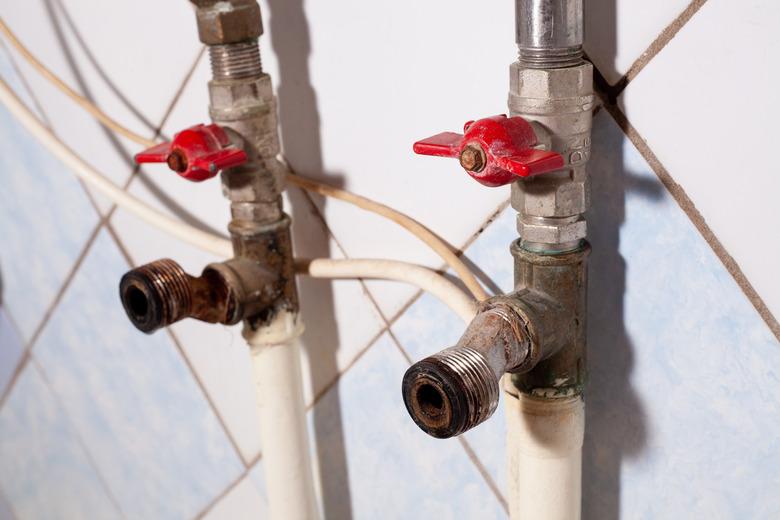How To Clean Rust Out Of Galvanized Water Pipes
If you live in a home built before the 1960s and haven't updated the plumbing, there's a good chance you have galvanized water pipes. Even homes built into the 1980s sometimes have these pipes. At the time, they were an upgrade from the lead pipes that were previously used, but they often don't last and can have major rust and corrosion issues. Identifying and dealing with the rust improves your water pressure and protects the safety of your water supply.
Problems With Galvanized Water Pipes
Galvanized water pipes are made out of steel and are dipped in a zinc coating. The purpose of the coating is to prevent rust and corrosion, but it doesn't work forever. Galvanized pipes typically last about 50 years.
Even with the protective zinc coating, years of constant exposure to water causes galvanized pipes to rust. The pipes rust on the inside, with the rust gradually building up and shrinking the opening in the pipe. It can also cause pinhole leaks that can result in water damage. Rust and other contaminants from the corrosion can get into your drinking water.
Identifying Galvanized Water Pipes
The age of your home can help you determine whether you have galvanized pipes. If it was built in the 1990s or later or if the plumbing has been replaced since then, you likely don't have galvanized pipes. However, you can often tell what type of plumbing material you're working with based on outward appearance.
Galvanized pipes are silver or gray in color and often change to be either lighter or darker as they get older. Sometimes, pipes get painted or discolored with age, but you can use a flathead screwdriver to scrape at the exterior gently to get a better look at the material. Galvanized pipes have a silver or gray color. Copper looks like a penny, and lead is a soft metal with a dull silver or gray look.
Another test is to use a magnet on the pipe. A strong magnet will stick to galvanized and copper pipes, but it won't stick to lead or plastic. It's also possible to have more than one type of pipe in your home if only part of the plumbing was replaced, so you might need to test different sections to determine if you have any galvanized pipes.
Determining If They're Rusted
Since the rust builds up inside the pipes, you can't see it easily without disassembling your plumbing. There are several signs of rust inside your galvanized pipes, though. Some signs of a rust issue include:
- A decrease in water pressure or flow with no other known causes.
- Cloudiness or rust in your water.
- Clogged faucet aerators.
- Uneven water flow due to uneven buildup in certain parts of your plumbing.
- Rust stains on porcelain sinks.
- Small rust spots on the exterior of the pipe.
Replacing Rusted Pipes
Plumbers usually recommend replacing rusted galvanized pipes because the rust signals damage inside the pipes. The walls of the pipes become thinner due to the rusting. They might even have small holes that are sealed by the rust. If you flush out the rust, you could reopen those holes, leading to water damage in your home.
Trying to clean out the rust can also stir up contaminants that end up in your water supply. The zinc that was used to coat the pipes wasn't always pure and sometimes included lead or other impurities. Lead can also get trapped in the rust if any part of the plumbing system used lead pipes along with galvanized pipes.
Cleaning and Lining Rusted Pipes
An alternative to replacement is to hire a plumber to clean out the galvanized pipes and line them to prevent future corrosion. Cleaning out the existing corrosion helps open up the pipes' interior. The plumber then blows epoxy into the pipes to create a lining that keeps water from touching the metal.
The process can help you get up to 50 more years out of your pipes, and it's often faster and less involved than repiping your house. However, you don't know for sure how much additional time you'll get out of the pipes. Look at the warranty on the lining process to help you decide.
